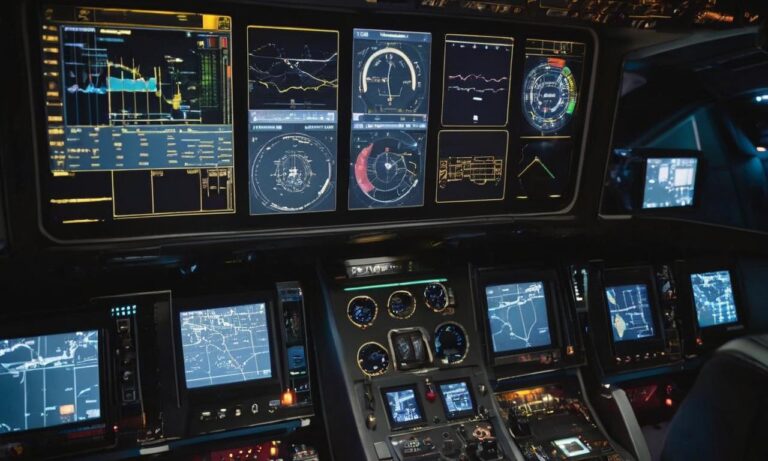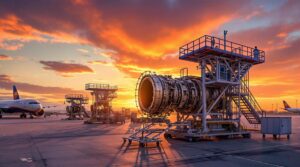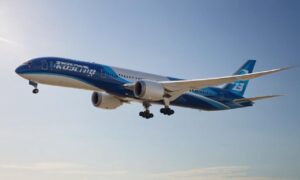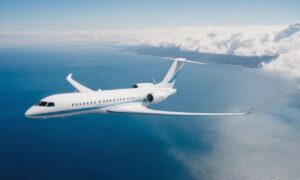The Boeing 737 Max Flight Control System has been a subject of extensive scrutiny and discussion in the aviation industry. As technology continues to advance, aircraft manufacturers strive to enhance safety, efficiency, and overall performance. The Boeing 737 Max, introduced as an upgrade to the popular 737 series, brought with it innovative features, including a sophisticated flight control system.
The Evolution of Flight Control Systems
Flight control systems play a pivotal role in ensuring the stability and maneuverability of an aircraft. Over the years, advancements in technology have led to the development of increasingly sophisticated systems. The Boeing 737 Max is no exception, incorporating cutting-edge technology to provide a state-of-the-art flying experience.
Key Features of the Boeing 737 Max Flight Control System
The Boeing 737 Max Flight Control System is characterized by its integration of advanced sensors, computers, and actuators. One of the notable features is the Maneuvering Characteristics Augmentation System (MCAS), designed to enhance the aircraft’s pitch stability under certain conditions. This system garnered significant attention following the incidents that led to the temporary grounding of the Boeing 737 Max fleet.
Understanding MCAS
MCAS was implemented to address the aerodynamic characteristics of the 737 Max, particularly in specific phases of flight. It automatically adjusts the horizontal stabilizer to prevent a stall in certain conditions. While designed with safety in mind, the system faced challenges and raised questions about pilot awareness, training, and system redundancy.
Safety and Regulatory Oversight
Ensuring the safety of passengers and crew is paramount in aviation. The Boeing 737 Max incidents prompted a thorough review by aviation authorities worldwide. Regulatory bodies like the Federal Aviation Administration (FAA) and the European Union Aviation Safety Agency (EASA) implemented rigorous assessments and modifications to address concerns and enhance the overall safety of the aircraft.
Continuous Improvement and Collaboration
Boeing has been actively engaged in addressing the issues surrounding the 737 Max Flight Control System. The company has collaborated with aviation authorities, airlines, and industry experts to implement corrective measures, improve pilot training, and enhance the overall safety of the aircraft.
In conclusion, the Boeing 737 Max Flight Control System is a pivotal component of one of the most widely used commercial aircraft globally. The aviation industry, Boeing, and regulatory authorities have worked collaboratively to address challenges, enhance safety measures, and ensure the continued reliability of the aircraft. As technology evolves, the commitment to innovation and safety remains at the forefront of the aviation community’s priorities.
Technological Advancements in Aircraft Design
The evolution of flight control systems reflects the broader trend of technological advancements in aircraft design. As aviation technology progresses, manufacturers continually explore new ways to improve the efficiency, reliability, and safety of aircraft. The Boeing 737 Max stands as a testament to the industry’s commitment to pushing the boundaries of what is possible in modern aviation.
Integration of Artificial Intelligence (AI)
One of the notable trends in flight control systems is the integration of artificial intelligence (AI). AI algorithms contribute to enhanced decision-making processes, predictive maintenance, and improved overall performance. The Boeing 737 Max Flight Control System harnesses AI to optimize various aspects of flight, marking a significant stride in the synergy between aviation and cutting-edge technologies.
| Benefits of AI Integration: | Challenges Addressed: |
|---|---|
| Enhanced decision-making | Improved system responsiveness |
| Predictive maintenance | Optimized fuel efficiency |
| Increased overall performance | Adaptability to diverse flight conditions |
Frequently Asked Questions
- Q1: How does the Boeing 737 Max Flight Control System utilize AI?
- Answer: The system incorporates AI algorithms for optimized decision-making, predictive maintenance, and improved overall performance.
- Q2: What challenges does the integration of AI address?
- Answer: AI integration addresses challenges such as improved system responsiveness, optimized fuel efficiency, and adaptability to diverse flight conditions.
Global Collaboration for Aviation Safety
The safety of aircraft is a collective effort that involves collaboration on a global scale. In response to incidents related to the Boeing 737 Max Flight Control System, international collaboration has become even more crucial. Aviation stakeholders worldwide are actively sharing insights, best practices, and implementing standardized protocols to ensure a unified approach to aviation safety.
International Aviation Safety Standards
Regulatory bodies worldwide are working towards establishing international aviation safety standards that go beyond national borders. This ensures a harmonized approach to safety regulations and facilitates a seamless exchange of information and expertise among countries.






